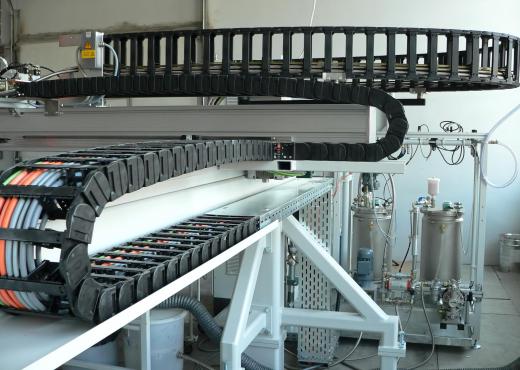Choosing the best conveyor belt cleaners depends on the type of belts you have and the materials that they handle. The main types of conveyor belt cleaners are scrapers, wipers, and brushes, each of which has its own best applications. Scrapers are usually best for smooth belts and can be made from a variety of different materials. Wipers can be used with smooth belts or those with a nonskid surface, and brushes can typically be used with any type of belt. You may also choose to use various configurations of pre-cleaners and secondary cleaners to achieve the best effect.
In most conveyor belt systems, a pre-cleaner is positioned just below the stream of materials off the belt. This is often a scraper, especially if the belt is smooth. These conveyor belt cleaners can prevent materials from sticking to the belt and redirect them into the main flow. The wear surface of a scraper can be made from a variety of compounds, including rubber, polyurethane, and metal. Choosing the right wear surface depends on what material your belt is made out of, since softer scraper materials typically need to be used with less durable belts.

There is also a special variety of conveyor belt cleaners known as rotary scrapers. These units may be your best choice if your conveyor system is handing food grade materials. The helical scrapers of these units are often used in the removal of sticky substances, such as chocolate. It may also be possible to obtain units that are factory sealed to reduce the possibility of contamination if you are transporting foodstuffs with your conveyor system.

Wipers are usually used as secondary cleaners that can be positioned against the belt behind the pulley that drives it. Nonabrasive rubber or polyurethane compounds are usually used to make wipers, making them a good choice for belts that are less durable. Depending on your specific requirements, you can typically get wipers that are either stationary or rotary. These are usually a good choice if you transport oily or wet materials.

Brushes are another type of conveyor belt cleaners that can be either stationary or rotary. These secondary cleaners can be used with any type of belt, though they are particularly well suited to nonskid and cleated applications. The brush can usually be positioned so that it contacts the belt very lightly, which can prevent it from wearing against cleats or other raised belt components. These conveyor belt cleaners are often well suited to removing powders and dusts.
